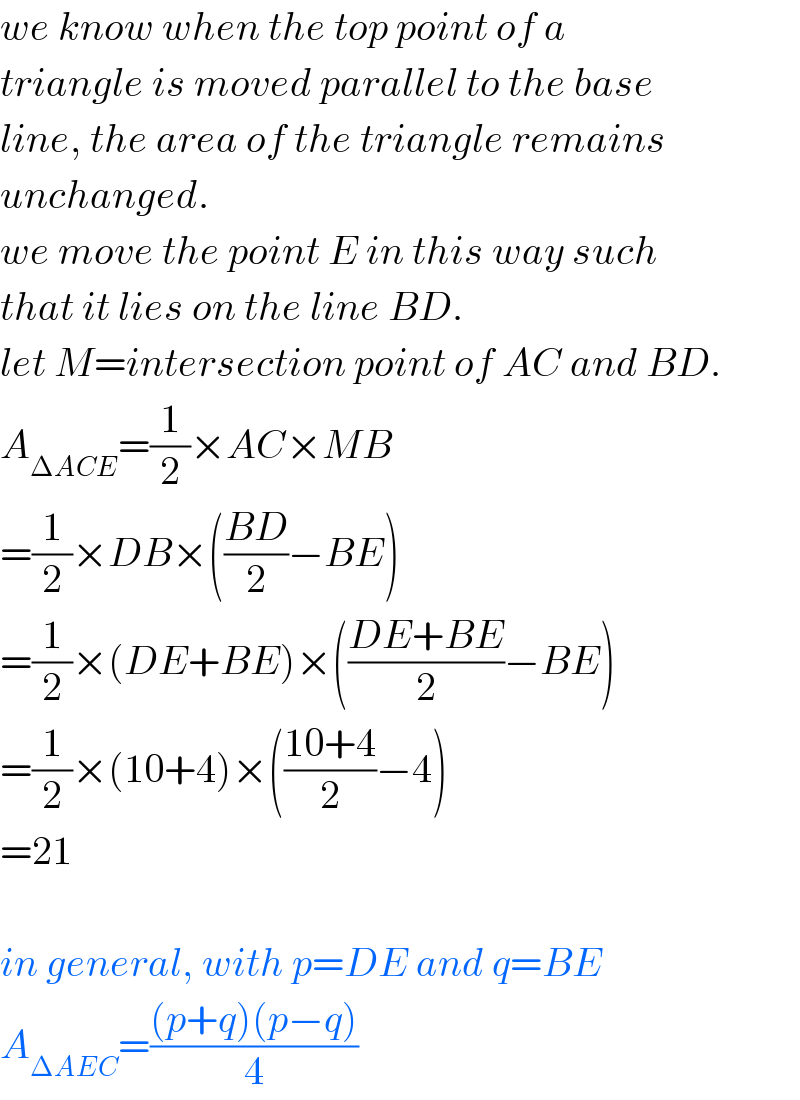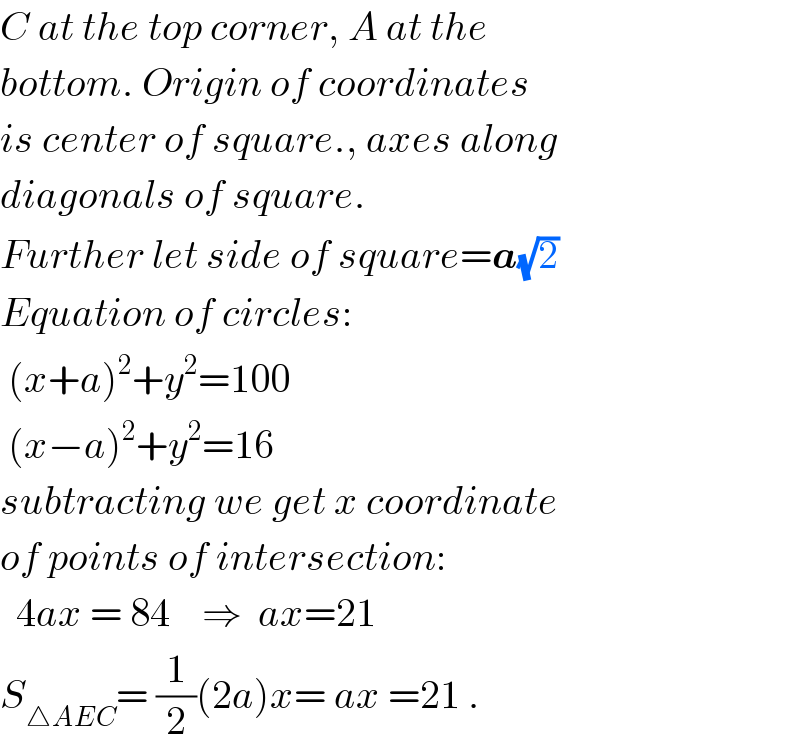
Question and Answers Forum
Question Number 14797 by b.e.h.i.8.3.4.1.7@gmail.com last updated on 04/Jun/17

Commented by mrW1 last updated on 05/Jun/17

Commented by b.e.h.i.8.3.4.1.7@gmail.com last updated on 04/Jun/17

Commented by RasheedSoomro last updated on 04/Jun/17

Commented by ajfour last updated on 04/Jun/17

Commented by ajfour last updated on 04/Jun/17

Commented by b.e.h.i.8.3.4.1.7@gmail.com last updated on 04/Jun/17

Commented by ajfour last updated on 04/Jun/17

Commented by b.e.h.i.8.3.4.1.7@gmail.com last updated on 04/Jun/17

Commented by ajfour last updated on 04/Jun/17

Commented by mrW1 last updated on 05/Jun/17

Commented by b.e.h.i.8.3.4.1.7@gmail.com last updated on 05/Jun/17

Commented by b.e.h.i.8.3.4.1.7@gmail.com last updated on 05/Jun/17

Answered by b.e.h.i.8.3.4.1.7@gmail.com last updated on 04/Jun/17

Commented by b.e.h.i.8.3.4.1.7@gmail.com last updated on 04/Jun/17

Commented by b.e.h.i.8.3.4.1.7@gmail.com last updated on 04/Jun/17

